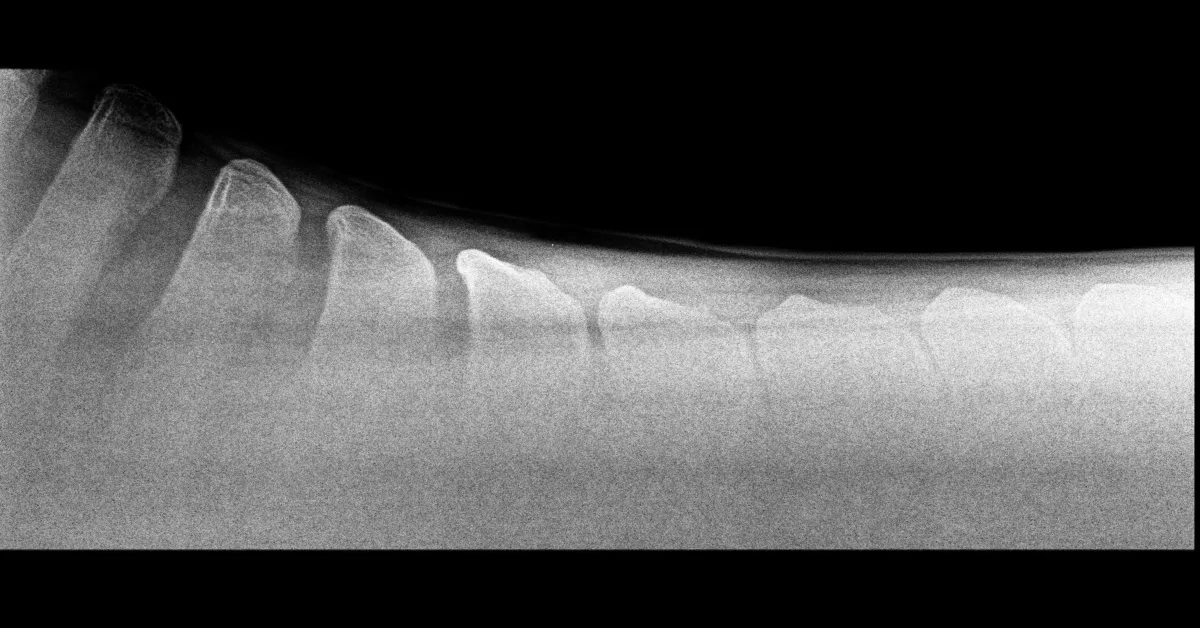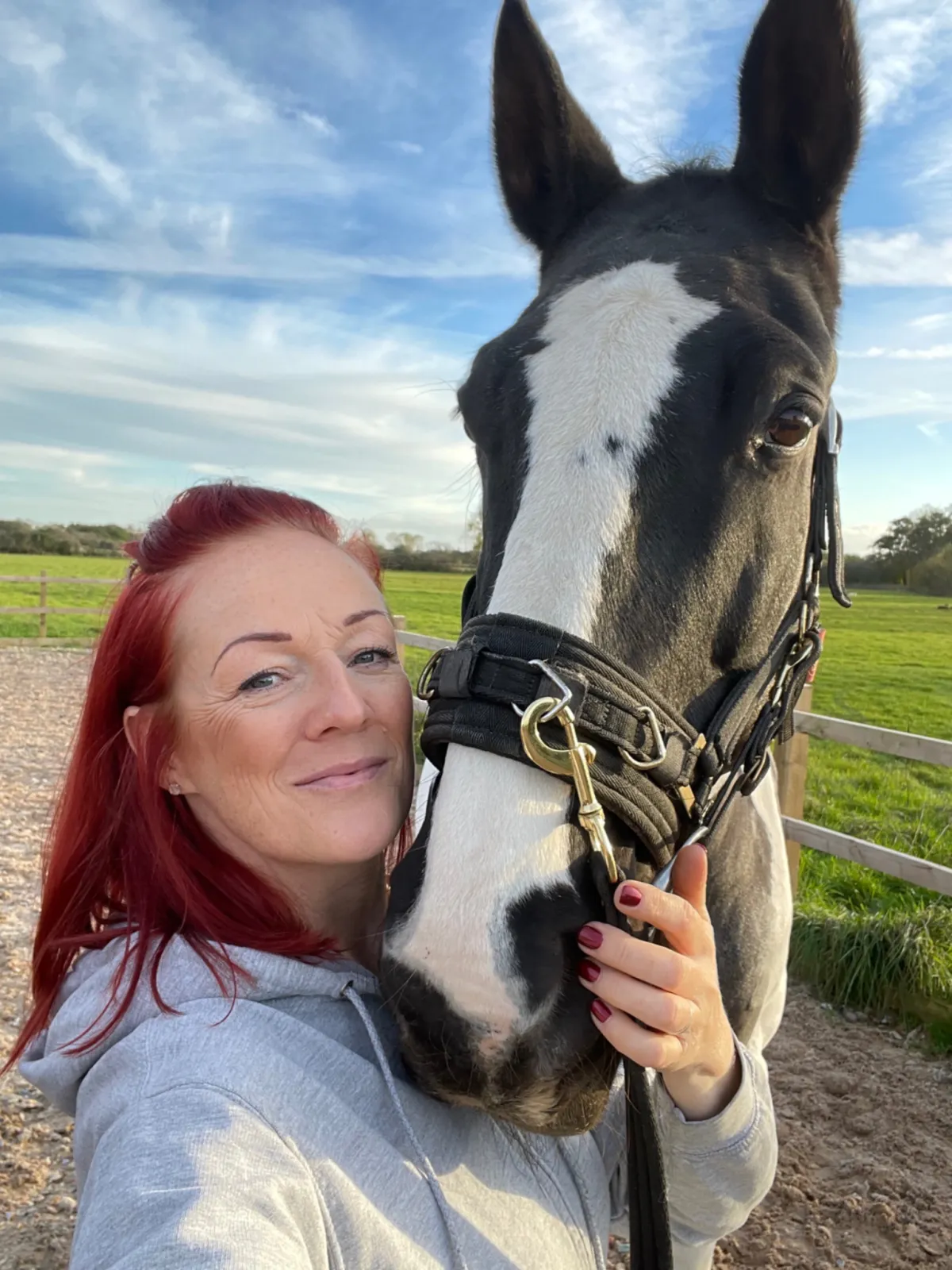
Kissing Spine in Horses: The Big Picture
Kissing Spine in Horses: The Big Picture
‘Kissing Spine’, or Over-riding Dorsal Spinous Processes (ORDSP), is a painful and increasingly common condition in horses. It can have a variety of causes and degrees of severity, and fortunately, we now have a wide range of treatment and rehabilitation options available. Helping horses through this journey is a major part of my work as an equine physiotherapist and rehabilitation specialist.
Recent research has even identified a gene that may predispose some horses to more severe forms of the condition. (You can read more about this in the Horse & Hound article I contributed to – link at the bottom of the page.)
Through years of supporting horses at every stage of the kissing spine journey – from initial diagnosis to post-surgery rehab – I’ve developed a deep understanding of what works, what doesn’t, and what’s truly in the horse’s best interest. It’s a condition I see regularly, and because of the patterns I’ve observed, I want to share what I’ve learned to support more horses and their owners through this process.
In this blog, I want to share the big picture:
What’s really going on in these horses?
Why does their anatomy put them at risk?
How does domestication and modern management affect their backs?
And why might modern training practices be part of the problem?
My hope is to help you see your horse through a different lens – one that empowers you to make more informed, compassionate decisions.
Why Are So Many Horses Being Diagnosed?
Let’s start with a wider perspective. The increasing number of kissing spine diagnoses is, in some ways, a good thing: more professionals are recognising the signs, and the condition is being talked about more openly. That’s a win for horses.
But if we zoom out even further, there are several factors behind the scenes that are contributing to what I call the “perfect storm” for kissing spine.
Anatomy: A Design Flaw?
Horses’ dorsal spinous processes (DSPs) – the bony projections along the spine – are naturally close together, particularly in the middle of the back where we sit. In fact, in this region, the bones angle toward each other. It doesn’t take much for them to become even closer and begin to touch.
👉 TIP: Search for images of equine spines or kissing spine x-rays – it’s eye-opening to see how close the bones are, even in “normal” horses.
The small, deep postural muscles along the spine, especially the multifidus muscles, are key to maintaining space between the bones. When these muscles are weak or atrophied – which happens easily without targeted strengthening – the DSPs can compress or overlap, creating pain.
Here’s the good news: core strengthening exercises have been scientifically proven to increase the size and function of the multifidus muscles. This means that yes, we can do something about it – we just need to know what exercises to use and how to apply them consistently and safely.
Domestication: A Hidden Contributor
Our domesticated lifestyle for horses isn’t doing their backs any favours. Factors like:
Lack of natural movement
Stabling
Rich, sugary grass (especially in the UK)
Horses being overweight and not cycling naturally through seasonal weight changes
Social isolation or unnatural herd dynamics
…all combine to create a body that is less resilient and more vulnerable to conditions like kissing spine.
Training Methods: Are We Asking Too Much, Too Soon?
This may be a little controversial, but I believe it’s vital to speak up for the horses.
Thirty or forty years ago, horses were typically started gently at age 4, turned away, and only brought into proper ridden work at age 6. Today, many are backed at 3, in full work by 4, and sometimes competing or jumping soon after. There’s often little time spent on groundwork, lunging, or developing correct posture before the saddle goes on.
Their bodies simply aren’t ready.
This rushed process – combined with anatomical vulnerability and lack of strength – only adds to the risk. It’s no surprise that so many horses are struggling.
So… What Can We Do?
We need to take a more conscious, holistic approach. Start by asking yourself:
Is my horse’s back strong and well-muscled, or weak and sagging?
Have I done any dedicated core strengthening work before starting or returning to ridden work?
Is my horse happy – not just in the field, but in their body and in exercise?
Am I listening to their posture, their body language, their subtle signs?
If you’re not sure, or if something doesn’t feel quite right, seek advice from a qualified physio or vet. These early questions can make a huge difference to long-term health and soundness.
Empowering You with the Right Tools
Understanding the basics of your horse’s anatomy, movement, and strength needs is one of the most valuable things you can do for their wellbeing – especially when it comes to preventing or supporting recovery from kissing spine.
That’s exactly why I created my online course,
👉 Core Exercises for Your Horse – a practical, proven approach to strengthening the postural and stabilising muscles that support spinal health.
It’s ideal for horses in rehab, horses coming back into work, or simply as a way to give your horse the best chance of long-term comfort and performance.
If this blog has resonated with you, and you want to be proactive in supporting your horse’s back and core health, click here to learn more about the course.
Your horse will thank you.
📖 Further Reading: Horse & Hound article on the genetic link to kissing spine (with my contribution)

